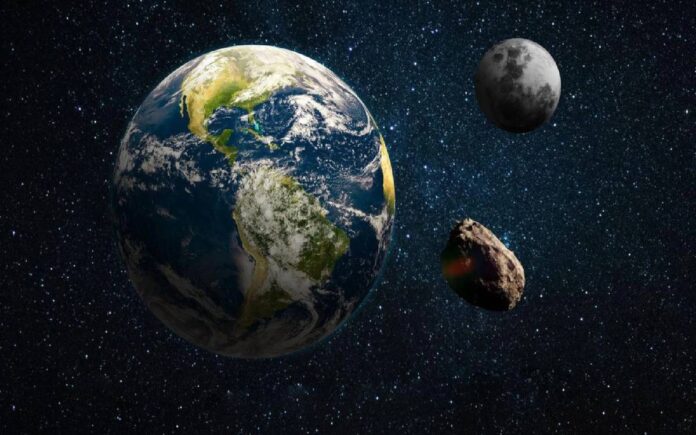New York: In a discovery that could reshape our understanding of Earth’s immediate cosmic neighborhood, scientists have identified what may be a growing population of “minimoons”—small, natural satellites temporarily captured by Earth’s gravity. Unlike our Moon, which is in permanent orbit, these elusive bodies loop around our planet for brief periods—weeks, months, or even a few years—before being flung back into solar orbit.
The revelation, detailed in a new study published in The Astrophysical Journal Letters, centers on a newly observed object named 2024 PT5, which exhibits both orbital behavior and surface composition remarkably similar to that of lunar rock. This finding, led by planetary scientist Teddy Kareta and his team at Lowell Observatory, may be the strongest evidence yet that some of these minimoons are not just stray asteroids—but actual fragments of the Moon itself.
Minimoons: Earth’s Temporary Companions
Minimoons are technically classified as temporarily captured orbiters (TCOs). Their orbits are unstable and chaotic, making them difficult to detect and track. However, they offer rare opportunities to study celestial objects that fall within our planet’s gravitational reach.
The identification of 2024 PT5 is particularly exciting. Not only is its trajectory consistent with the chaotic paths associated with TCOs, but its spectral signature—how it reflects and scatters light—closely matches samples returned from the Moon during NASA’s Apollo missions. This strongly suggests it may be a chunk of lunar debris launched into space by a past meteorite impact on the Moon.
As Kareta noted at the 56th annual Lunar and Planetary Science Conference,
“If there were only one object, that would be interesting but an outlier. If there’s two, we’re pretty confident that’s a population”.
This statement underscores that the discovery of multiple such objects would confirm that these lunar-origin minimoons are not anomalies, but part of a broader, previously hidden group.
How Lunar Debris Becomes Earth’s Temporary Satellites
When meteoroids slam into the Moon at high velocity, the impact can eject surface fragments far into space. Some of this debris enters Earth’s gravitational influence, getting trapped in temporary orbits. Simulations show these fragments follow highly elliptical and unpredictable paths, staying near Earth until they either burn up in the atmosphere, escape to solar orbit, or are diverted by gravitational interactions.
Why Minimoons Matter for Science and Space Exploration
Minimoons, especially those of lunar origin, present unique scientific and strategic opportunities:
- Geological Insight: They may hold clues to the Moon’s surface history, allowing scientists to study lunar material without needing to land or return samples from the Moon itself.
- Impact History: Analysis of their age and origin can enhance our understanding of lunar impact events over time.
- Orbital Dynamics: Studying their orbits can help scientists refine models of Earth-Moon gravitational interactions.
Kareta likened the discovery to forensic science, saying:
“It’s like discovering a crime scene has a completely new type of evidence you didn’t realise you had before”.
Minimoons as Future Exploration Targets
Beyond scientific value, minimoons are attractive for future space missions. Their close proximity and relatively slow speeds make them ideal for robotic spacecraft, sample collection, and testing technologies intended for asteroid mining or deep space exploration. These miniature satellites could act as stepping stones for larger interplanetary missions or even serve as resources in the future space economy.
The Need for Better Detection Technology
The discovery of 2024 PT5 also highlights limitations in current sky-monitoring systems. Most telescopic networks are designed to detect larger and brighter near-Earth objects (NEOs). Minimoons, due to their small size and low brightness, often evade detection. Kareta’s findings underline the need for more sensitive survey systems and continuous observation strategies tailored to spotting these fleeting cosmic visitors.
As the search for more minimoons intensifies, this new class of celestial objects may become a key piece in solving mysteries about the Moon, Earth’s history, and the dynamics of our shared cosmic environment.



